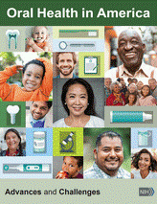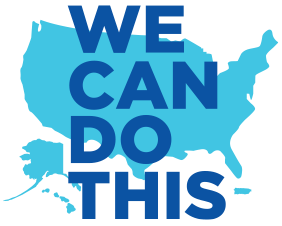
Dear Friends:
I am Carole Johnson, and this week, I am joining HRSA as the Administrator. I am especially delighted to join HRSA in this role, having spent time earlier in my career as part of the agency’s health care workforce team. Returning to HRSA as Administrator is an honor, and I look forward to working each day with the incredibly committed staff, grantees and partners who make up the HRSA community. I want to share my appreciation for Deputy Administrator Diana Espinosa’s dedication to the communities that HRSA serves and leadership as Acting Administrator over the past year.
Like you, I am deeply committed to HRSA’s mission of improving health outcomes and achieving health equity. I have seen firsthand HRSA’s tireless efforts to provide equitable access to COVID-19 vaccination and services and to support health care providers struggling with the financial impacts of the pandemic through my work with the White House COVID-19 Response Team. As Commissioner of the New Jersey Department of Human Services, which provides health care and social services to one-in-five New Jerseyans, I saw the impact of HRSA programs on ensuring access to affordable primary care, supporting health professionals who serve in underserved communities, and reducing disparities in infant and maternal health outcomes and HIV care. I have also had the opportunity to work closely with HRSA and others inside and outside of government on implementing the Affordable Care Act and combatting the opioid epidemic.
It’s an extraordinary list of services and supports that this team delivers in communities across the country, and it only happens with the help and partnership of so many community leaders. I look forward to hearing your thoughts and feedback on how we can become an even stronger agency as we work to advance health equity and improve access to care and services for those who need it most.
With best wishes for the new year,
Carole Johnson
|

December 23 - The U.S. Department of Health and Human Services (HHS), through the Health Resources and Services Administration’s (HRSA) Federal Office of Rural Health Policy, is announcing the availability of nearly $48 million in American Rescue Plan funding for community-based organizations to expand public health capacity in rural and tribal communities through health care job development, training, and placement. Awardees will be able to use this funding to address workforce needs related to the long-term effects of COVID-19 as well as health information technology (IT) needs and other key workforce issues.
This notice of funding opportunity builds on the Biden-Harris Administration’s recent historic workforce announcement of awarding the largest field strength in history for its health workforce loan repayment and scholarship programs.
Read the press release.
|
 We have published our 2021 Year in Review and Agency Overview. Find out how we responded to COVID-19 and how our programs improve tens of millions of American lives. Learn about the reach and impact of our programs.

Our Bureau of Primary Health Care (BPHC) invites anyone who may be interested to join its upcoming Patient-Centered Medical Home Health Equity Technical Assistance Symposium on Monday, January 31 and Tuesday, February 1, 11:00 a.m. - 4:30 p.m. ET.
Participants will hear about and discuss best practices and lessons learned from peers and experts in the fields of health equity, quality improvement, and accreditation/recognition.
Register with key, PCMH2022
|

The Provider Relief Fund (PRF) reporting portal is open for providers required to report on PRF payments during Reporting Period 2. The portal will remain open until Thursday, March 31. Learn more about reporting requirements.
|
We are extending the Fiscal Year (FY) 2022 Nurse Corps Loan Repayment Program (NC LRP) application cycle to Thursday, January 27. We plan to award more clinicians than ever before. Visit our Nurse Corps Loan Repayment Program webpage for more details. |
|
 |

Public Health Reports published a new study by our Maternal and Child Health Bureau (MCHB) researchers, Missed and Delayed Preventive Health Care Visits Among US Children Due to the COVID-19 Pandemic.
Using data from the Census Bureau’s Household Pulse Survey collected in April/May 2021, the researchers estimated the prevalence of missed, skipped, or delayed preventive checkups among households with children in the previous 12 months. They found that about 26% of these households had at least one or more children (< 18 years old) who had missed or delayed their preventive visit because of the pandemic.
Find out the most common reasons for missed/delayed preventive health care visits, variations between states, socioeconomic differences, and more.
|

Throughout 2021, our stakeholders and staff have continued to innovate and persevere. Our Office of Women’s Health (OWH) is honoring this by continuing the Women’s Health Leadership Series of webinars to highlight innovative women’s health practices by and for HRSA-funded and other safety net settings of care.
Our Office of Global Health will join our Office of Women's Health to kick off 2022 by honoring Cervical Health Awareness Month with a new webinar, the Current State of Cervical Health Domestically and Internationally: An Opportunity for Knowledge Exchange and Bidirectional Learning.
Join us on Thursday, January 20, 10-11:00 a.m. ET to hear about the Cervical Cancer Moonshot Project spurred by OWH. Learn from U.S. President's Emergency Plan for AIDS Relief (PEPFAR) HRSA-funded global implementing partners, understand recent innovations in cervical health, and more. For questions or follow-up, contact HRSA OWH.
|

The NIH Office of Disease Prevention (ODP) is seeking comment on the draft report from an independent panel at its recent Pathways to Prevention (P2P) Workshop: Improving Rural Health Through Telehealth-Guided Provider-to-Provider Communication.
The report summarizes the workshop discussions and identifies future research priorities. Comments on the draft report will be accepted through Friday, February 4. Please reference the corresponding line number in the report for each comment and submit all comments to NIHP2P@mail.nih.gov.
Analysis by our Office for the Advancement of Telehealth shows that nearly every part of HRSA is supporting provider-to-provider projects.
|

Residents in long-term care facilities face a higher risk in contracting and becoming seriously ill from COVID-19. Nursing homes, assisted living, residential care, and intermediate care facilities account for about 31% of all COVID deaths, although their residents account for just under 3% of the U.S. population.
Early in the pandemic, individuals entering long-term care facilities from other locations, such as staff or family and other visitors, were identified as a significant source of infection as the virus spread from surrounding communities and other health care facilities. As the pandemic continues, learn how lawmakers are exploring ways to mitigate the spread of COVID-19 in long-term care facilities and safeguard the health of residents by modifying various requirements for staff and visitors while balancing residents’ social and support needs.
HRSA’s National Organizations of State and Local Officials Cooperative Agreement provided support for this National Conference of State Legislatures (NCSL) resource.
|

Oral Health in America: Advances and Challenges is a culmination of two years of research and writing by over 400 contributors. As a follow up to the Surgeon General's Report on Oral Health in America, this report explores the nation's oral health over the last 20 years.
View a video message from National Institute of Dental and Craniofacial Research (NIDCR) Director Dr. Rena D’Souza, who shares highlights of the landmark report.
|

Share outreach resources from the HHS toolkit for community messaging to include new materials. You can use the materials to educate your community about COVID-19 vaccine boosters.
|
|
|
|